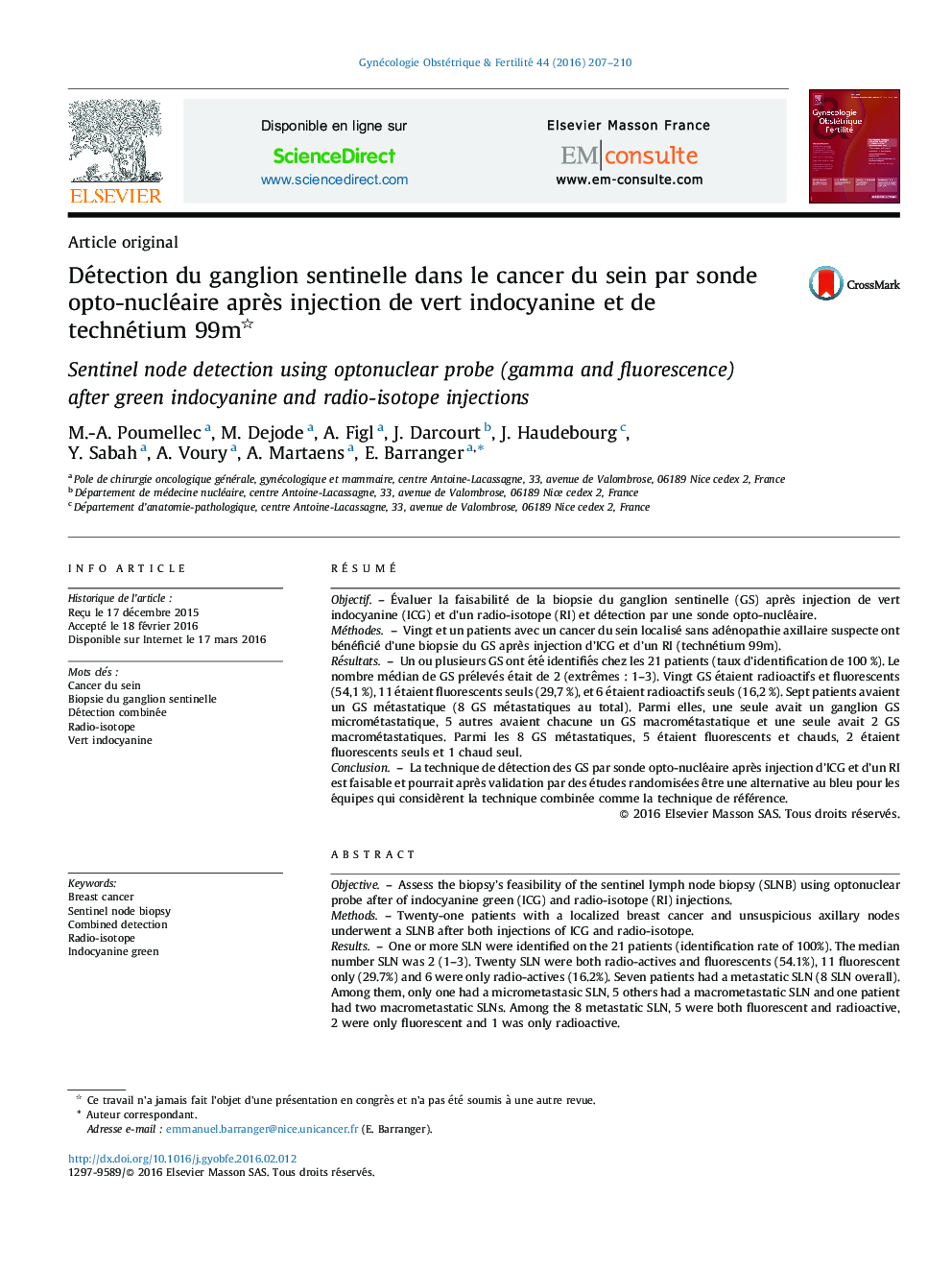| Article ID | Journal | Published Year | Pages | File Type |
|---|---|---|---|---|
| 3948312 | Gynécologie Obstétrique & Fertilité | 2016 | 4 Pages |
RésuméObjectifÉvaluer la faisabilité de la biopsie du ganglion sentinelle (GS) après injection de vert indocyanine (ICG) et d’un radio-isotope (RI) et détection par une sonde opto-nucléaire.MéthodesVingt et un patients avec un cancer du sein localisé sans adénopathie axillaire suspecte ont bénéficié d’une biopsie du GS après injection d’ICG et d’un RI (technétium 99m).RésultatsUn ou plusieurs GS ont été identifiés chez les 21 patients (taux d’identification de 100 %). Le nombre médian de GS prélevés était de 2 (extrêmes : 1–3). Vingt GS étaient radioactifs et fluorescents (54,1 %), 11 étaient fluorescents seuls (29,7 %), et 6 étaient radioactifs seuls (16,2 %). Sept patients avaient un GS métastatique (8 GS métastatiques au total). Parmi elles, une seule avait un ganglion GS micrométastatique, 5 autres avaient chacune un GS macrométastatique et une seule avait 2 GS macrométastatiques. Parmi les 8 GS métastatiques, 5 étaient fluorescents et chauds, 2 étaient fluorescents seuls et 1 chaud seul.ConclusionLa technique de détection des GS par sonde opto-nucléaire après injection d’ICG et d’un RI est faisable et pourrait après validation par des études randomisées être une alternative au bleu pour les équipes qui considèrent la technique combinée comme la technique de référence.
ObjectiveAssess the biopsy's feasibility of the sentinel lymph node biopsy (SLNB) using optonuclear probe after of indocyanine green (ICG) and radio-isotope (RI) injections.MethodsTwenty-one patients with a localized breast cancer and unsuspicious axillary nodes underwent a SLNB after both injections of ICG and radio-isotope.ResultsOne or more SLN were identified on the 21 patients (identification rate of 100%). The median number SLN was 2 (1–3). Twenty SLN were both radio-actives and fluorescents (54.1%), 11 fluorescent only (29.7%) and 6 were only radio-actives (16.2%). Seven patients had a metastatic SLN (8 SLN overall). Among them, only one had a micrometastasic SLN, 5 others had a macrometastatic SLN and one patient had two macrometastatic SLNs. Among the 8 metastatic SLN, 5 were both fluorescent and radioactive, 2 were only fluorescent and 1 was only radioactive.ConclusionDetection SLN using optonuclear probe after indocyanine green and radio-isotope injections is effective and could be, after validation by randomized trial, a reliable alternative to the blue dye injection for teams who consider that combined detection as the reference.
